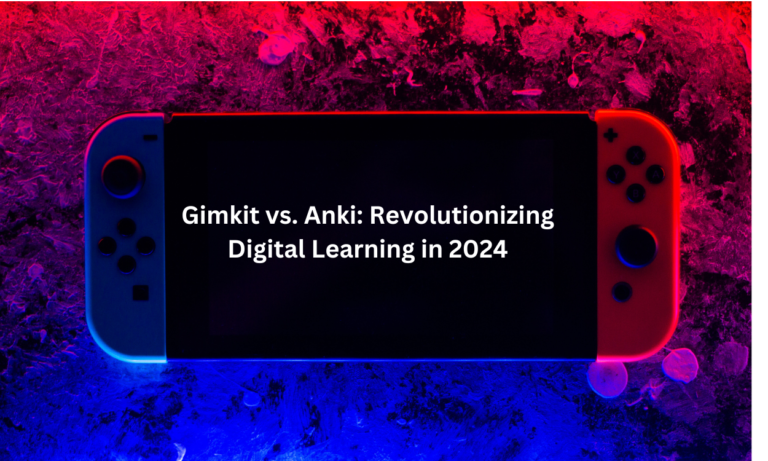How Teachers Can Create Quizzes on Gimkit [2024]
How Teachers Can Create Quizzes on Gimkit 2024.In the digital age, technology has transformed traditional teaching methods, making learning more interactive and engaging. One of the innovative tools that have gained prominence is Gimkit, an online platform designed to enhance learning through interactive quizzes and games. This article provides an in-depth guide for teachers on how to create quizzes on Gimkit, maximizing its features to engage students and assess their learning effectively.
What is Gimkit?
Gimkit is an educational technology platform that blends learning with gamification. It allows teachers to create quizzes and assessments that students can participate in through a game-based format. Unlike conventional quizzes, Gimkit offers real-time feedback, competitive elements, and a dynamic interface that motivates students to participate actively.
Key Features of Gimkit
Real-Time Feedback
Gimkit provides immediate responses to students’ answers, allowing them to learn from their mistakes on the spot. This feature helps reinforce learning and address misconceptions quickly.
Gamification Elements
The platform incorporates game-like features such as points, power-ups, and leaderboards. These elements make the learning process more engaging and fun, encouraging students to participate and compete in a friendly manner.
Customizable Quizzes
Teachers can tailor quizzes to fit specific subjects, topics, or learning objectives. This customization ensures that the quizzes are relevant and aligned with the curriculum.
Reports and Analytics
Gimkit offers detailed reports and analytics that provide insights into student performance. Teachers can track progress, identify areas for improvement, and adjust their teaching strategies accordingly.
Getting Started with Gimkit
Before diving into quiz creation, it’s essential to understand how to set up your Gimkit account and navigate the platform.
Creating a Gimkit Account
- Sign Up: Visit the Gimkit website and click on the ‘Sign Up’ button. You can use your school email to create an account, which may provide access to additional features.
- Choose a Plan: Gimkit offers both free and paid plans. The free plan provides basic functionalities, while the paid versions offer advanced features such as detailed analytics, additional game modes, and enhanced customization options.
- Verify Your Email: Check your email for a verification message from Gimkit. Follow the instructions to complete your account setup.
Navigating the Dashboard
Upon logging in, you’ll be directed to your dashboard. This is where you can manage your quizzes, view reports, and access various tools and settings.
- Home: View recent activities, access your quizzes, and explore new features.
- Create: Start creating new quizzes and manage existing ones.
- Reports: Access performance analytics and detailed reports on quiz results.
- Settings: Customize your account settings and preferences.
How to Create a Quiz on Gimkit
Creating a quiz on Gimkit involves several steps, from designing the quiz to customizing its settings. Here’s a detailed guide to help you through the process.
Step 1: Access the Quiz Creation Tool
- Go to the ‘Create’ Tab: From your dashboard, click on the ‘Create’ tab to start building a new quiz.
- Select ‘New Kit’: Click on the ‘New Kit’ button to begin the quiz creation process.
Step 2: Design Your Quiz
Title and Description
- Title: Choose a clear and descriptive title for your quiz that reflects its content. For example, “The American Revolution: Key Events and Figures”.
- Description: Write a brief description outlining the purpose of the quiz. This helps students understand what they will be assessed on. For instance, “This quiz covers major events and figures from the American Revolution. It includes multiple-choice and true/false questions.”
Question Types
Gimkit supports various question types, each designed to assess different aspects of student knowledge:
- Multiple Choice: Provide a question with several answer options. Students select the correct answer from the list.
- True/False: Present a statement, and students choose whether it is true or false.
- Fill-in-the-Blanks: Students complete sentences or phrases with missing words.
- Open-Ended: Allow students to provide written responses. This question type is useful for assessing critical thinking and detailed understanding.
Adding Questions
- Enter Questions: Input your questions into the provided fields. For multiple-choice questions, list the options and specify the correct answer.
- Add Media: Enhance your quiz by adding images, videos, or audio clips. This multimedia approach can make questions more engaging and provide additional context.
- Formatting: Use clear and concise language in your questions and answer choices. Avoid ambiguity and ensure that the questions are straightforward.
Step 3: Customize Your Quiz
Settings and Preferences
- Time Limits: Set time limits for each question to keep the quiz engaging and prevent students from spending too long on individual questions.
- Difficulty Levels: Adjust the difficulty of questions to match your students’ learning levels. This ensures that the quiz is appropriately challenging.
- Game Modes: Choose from various game modes such as ‘Classic’ or ‘Teams’. Each mode offers a different format for quiz participation.
Power-Ups and Rewards
- Power-Ups: Add interactive elements like ‘Double Points’ or ‘Extra Time’ to make the quiz more dynamic. Power-ups can enhance the competitive aspect and keep students motivated.
- Rewards: Set up rewards to incentivize participation. This could include virtual badges, bonus points, or other forms of recognition.
Step 4: Preview and Test Your Quiz
- Preview: Use the preview function to see how your quiz will appear to students. This allows you to make any necessary adjustments before publishing.
- Test: Take the quiz yourself or have a colleague test it. This helps identify any issues or areas for improvement.
Step 5: Publish and Share Your Quiz
- Publish: Once you’re satisfied with the quiz, click the ‘Publish’ button to make it available to your students.
- Share: Provide your students with a link or code to access the quiz. You can share this through email, your learning management system (LMS), or other communication channels.
Best Practices for Creating Effective Gimkit Quizzes
To maximize the effectiveness of your Gimkit quizzes, consider the following best practices:
Align with Learning Objectives
Ensure that each question is aligned with your educational goals and the material covered in your lessons. This alignment helps reinforce learning and assesses students on relevant content.
Keep Questions Clear and Concise
Use straightforward language and avoid complex phrasing. Clear and concise questions help students understand what is being asked and reduce confusion.
Incorporate Variety
Mix different types of questions and media to maintain student interest. Varied question formats and multimedia elements cater to different learning styles and make the quiz more engaging.
Use Data to Inform Instruction
Analyze the performance data provided by Gimkit to track student progress and identify areas where additional support may be needed. Use these insights to adjust your teaching strategies and improve learning outcomes.
Advanced Features and Tips
Gimkit offers several advanced features that can enhance your quiz creation and student engagement:
Integrating Gimkit with Other Tools
- Google Classroom: Sync your Gimkit quizzes with Google Classroom to streamline assignment distribution and management. This integration allows you to assign quizzes directly to your students and track their progress within Google Classroom.
- Microsoft Teams: Share and manage Gimkit quizzes through Microsoft Teams for improved collaboration. This integration facilitates easy access to quizzes and fosters communication among students.
Leveraging Reports and Analytics
- Performance Insights: Utilize the detailed reports and analytics to gain insights into student performance. Track metrics such as accuracy rates, question difficulty, and overall quiz results.
- Identify Trends: Look for patterns in student responses to identify common misconceptions or areas where students may need additional instruction.
Engaging Students with Gamification
- Leaderboards: Use leaderboards to create a sense of competition and motivation. Displaying top performers can encourage students to participate more actively.
- Classroom Challenges: Organize team-based challenges or quiz tournaments to foster collaboration and collective learning. These activities can enhance student engagement and create a positive classroom atmosphere.
Common Challenges and Solutions
Technical Issues
- Solution: Ensure that students have a stable internet connection and that their devices are compatible with Gimkit. Provide technical support and resources to address any issues that may arise.
Engagement and Motivation
- Solution: Regularly update your quizzes and incorporate feedback from students to keep the content relevant and engaging. Use a variety of question types and multimedia elements to maintain interest.
Conclusion
Creating quizzes on Gimkit offers teachers a dynamic and interactive way to assess student learning and enhance classroom engagement. By leveraging Gimkit’s features, customizing quizzes to align with your curriculum, and utilizing data to inform instruction, you can create an effective learning experience for your students. Embrace the power of gamification and technology to make your quizzes more engaging and educational.
FAQs
How do I access my Gimkit quiz results?
To access your quiz results, log in to your Gimkit account, navigate to the ‘Reports’ section, and select the quiz you wish to review. Here, you can view detailed performance data and insights.
Can I collaborate with other teachers on a quiz?
Yes, Gimkit allows you to share and collaborate on quizzes with other educators. You can invite colleagues to edit
or review your quizzes, fostering collaboration and sharing of best practices.
Are there any limitations to the free version of Gimkit?
The free version of Gimkit provides basic features, including quiz creation and participation. However, advanced features such as detailed analytics, additional game modes, and enhanced customization options are available in the paid plans.







